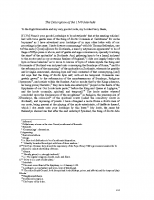Before further posts detailing our discussions about the staging of the outdoor version of the Satire in June, here is another essay from Greg Walker about the feasibility of the Interlude that was performed before James V on Epiphany in 1540 being an earlier version of the Lindsay’s play and authored by him.
The relationship between the ‘lost’ interlude played in Linlithgow in 1540 (which is accessible only through the ‘notes’ and description sent to Thomas Cromwell by the English agent William Eure), and the full version of The Thrie Estaitis (which I will refer to here as the Satire), for which we have two surviving texts, has always been a matter for debate among scholars. Lyndsay’s first editor of the modern era, Douglas Hamer, argued in the 1930s that the 1540 Interlude was an earlier version of the Satire (Hamer, Works, II, pp. 1-6), but critics have not always agreed. Angus Calder thought the Interlude ‘had one or two features in common with the Satire’ (‘Introduction’ to Spence, p. vii), John MacQueen that the 1540 interlude ‘was only generally similar to the…[text] which has survived’ (p.135). Perhaps most powerfully, R.J. Lyall, while acknowledging that ‘the affinities between the interlude and The Thrie Estaitis are striking enough for the former to be widely accepted as the original version of the latter’, was nonetheless troubled by the ‘many differences’ he also saw between the two, and so on balance concluded with cautious pessimism about our ability to connect them.
William Eure’s letter and the ‘nootes of the interluyde’ mentioned by Greg can be found in the Documents section of the website incidentally –







